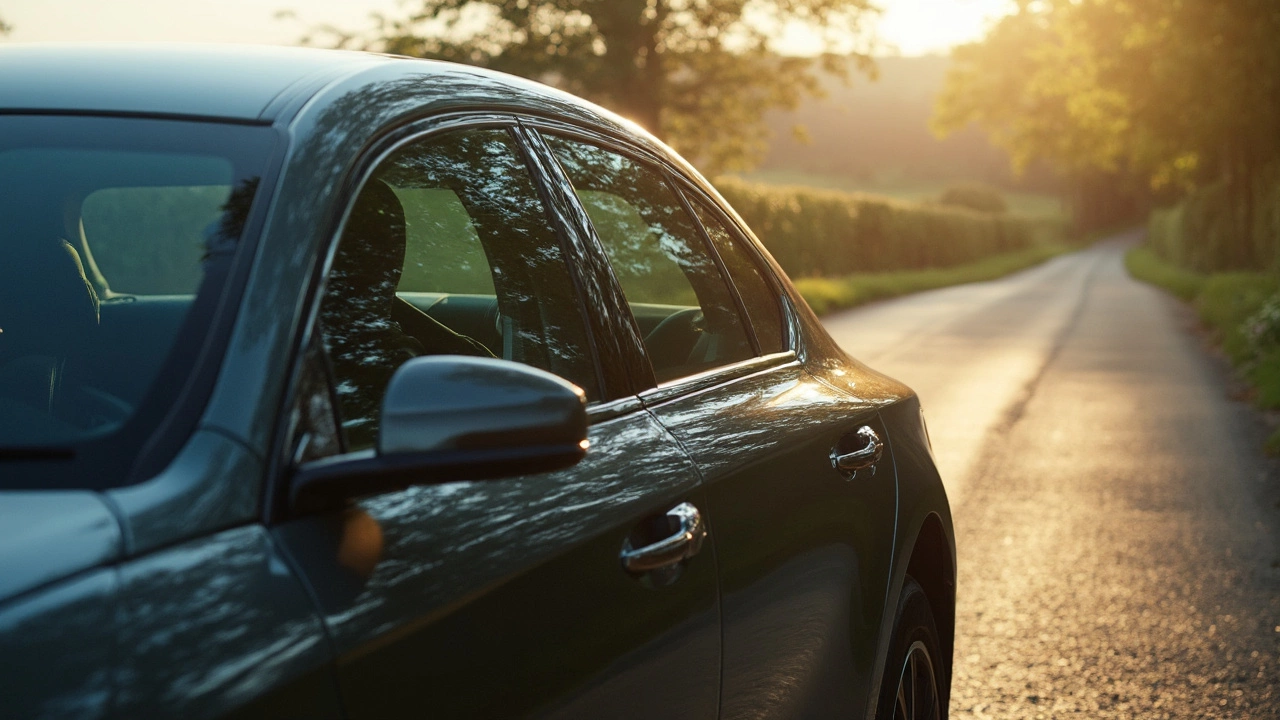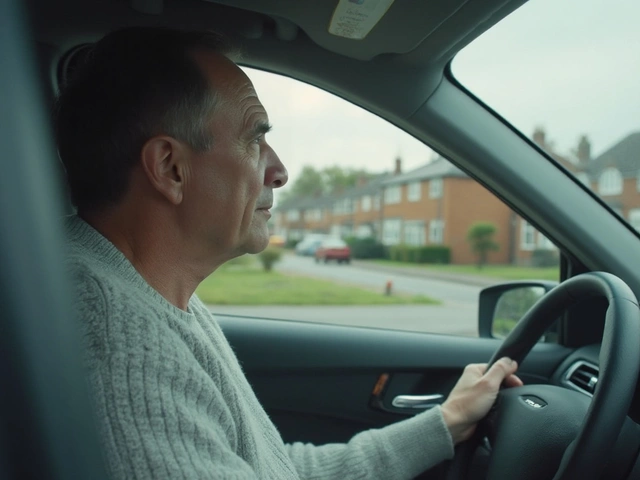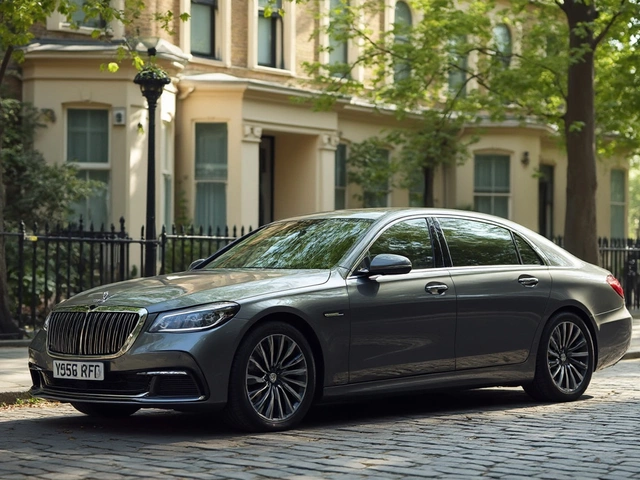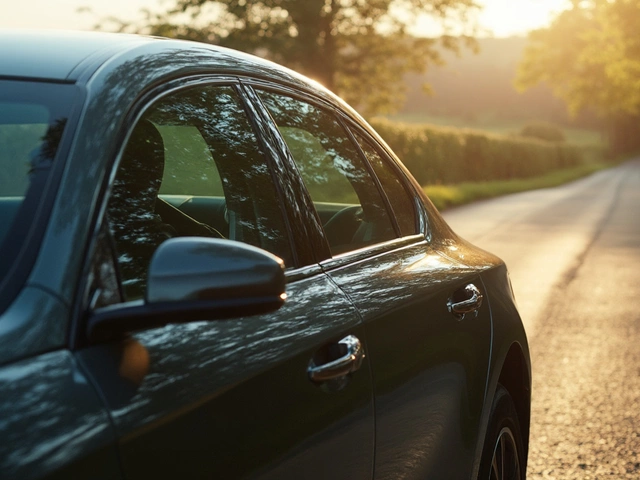Staring at that new car in the lot with its crisp, clear glass, you might think—shouldn’t window tint be almost invisible? Yet that factory look isn’t always the best, especially beneath the relentless Australian sun. People talk big about ‘dark tints,’ privacy glass, and the hyper-reflective crime-scene Ubers, but there’s a practical, easy-going middle ground that kind of slips past most drivers: the 70% tint. If you blink, you’ll miss it… literally, it’s nearly clear. But does it really do anything?
What Exactly Is 70 Tint, and Why Should You Care?
Let’s break down what "70 tint" actually means. When you see ‘70%’ on a tint spec, it’s talking about Visible Light Transmission (VLT). That number tells you how much light the film lets through. So, 70% VLT means 70% of visible light passes through and only 30% is blocked. In a country where the sun can fry an egg on your dashboard, every drop of shade counts, right?
It’s not about turning your car into a blacked-out Batmobile. In fact, 70 tint is so light, most people won’t spot it unless they’re really looking. But it still helps cut out a lot of harsh glare and those nasty UV rays. Here’s something drivers miss: while low VLT numbers like 20% or 5% look dark and mysterious, 70% tint actually gives you a softer, more natural appearance on your glass. It’s popular for drivers who want some UV protection and better comfort but don’t want to look like they’re dodging the paparazzi.
How Does 70 Tint Look in Real Life?
When you slap on a 70 tint, don’t expect to see your car suddenly transform. There’s no ‘wow’ moment—think subtle. That’s kind of the point for some folks. You can easily look through your car’s windows both inside and out, even at night. On a scale of “barely there” to “night club,” 70 tint definitely leans way to the clear side.
Yet, if you line up a car with 70 tint next to a car with no tint at all, you’ll spot a faint shading. Under direct sunlight, 70 tint slightly chops down on the glass’s glare, making the interior feel a touch cooler. Under artificial light, you’ll notice the tint sort of softens harsh reflections, like the neon glow of a late-night petrol station. But it’s so light cops usually won’t give you a second glance – which is a big deal in states with strict tint rules, including VIC and NSW.
The magic comes in certain conditions: Just after sunrise, or on those white-hot afternoons, you literally feel the difference. Like when the sun comes in a bit sideways—without tint, you’re squinting; with 70, you’re not. Some drivers say the glass even feels less ‘hot’ to the touch. And here’s a stat for the nerds: quality 70% films block up to 99% of UV radiation, even if they seem clear. That’s a silent win for your skin and your car’s fading leather.
| Window Tint % | Visible Light Transmission | Appearance | UV Protection | Heat Rejection (Typical) |
|---|---|---|---|---|
| No tint | 85-90% | Completely clear | Little | 5%-9% |
| 70 tint | 70% | Just noticeable shade | 99% (with quality film) | 20%-40% |
| 35 tint | 35% | Moderate darkness | 99% | 40%-55% |
| 20 tint | 20% | Dark, privacy effect | 99% | 50%-65% |

Does 70 Tint Work Well for Everyday Life?
This is where things get way more interesting than you’d expect. For city commuters, parents hauling kids to swimming, or folks who want peace of mind, 70 tint covers a surprising amount of ground. Legal-wise, 70% is the maximum tint allowed on some front windows in multiple states, like Victoria. No need to stress about a roadside fine or getting a green defect sticker—just drive with confidence.
Kid passengers? Consider this: Australian research says up to 50% of vehicle cabin UV exposure happens through the side windows. Kids get their faces right up to the glass, watching the world go by. With 70 tint, you’re quietly blocking the UV spike that accelerates sunburn, skin aging, and even skin cancers. And since it’s barely visible, your car still looks showroom fresh—not like an unmarked police cruiser.
Another plus? Night driving. Hard to believe, but darker films (say, 20%) can make it outrageously difficult to see out of the side windows or mirrors after sunset. That’s how people start scraping their wheels or missing cyclists. But 70 tint doesn’t stuff up your view—it’s crystal clear after dark.
Let’s not forget the heat. Sure, 70 isn’t the king of cool compared to darker tints, but tech has marched on in recent years. High-end 70% films often come with ceramic or nano-particle coatings, so they kick out a decent chunk of heat. You might get a 4–5°C drop in cabin temps if your car sits outside four hours in peak sun. Feels like more on scorching days, honestly.
Why People Go with 70 Tint—And When To Skip It
If you ever wonder who actually picks 70% tint on purpose, think: practical drivers. There’s no secrecy, just a clean, sophisticated look that passes any inspection. It’s popular among families, rideshare drivers who can’t break laws, and folks with luxury cars who don't want to mess up their lease agreements. Even tradespeople using mobile offices—70 allows them to add UV and heat protection to those front windows, where the rules are the tightest.
But there’s a flipside: If you want privacy, forget it. With a 70 tint, people outside the car can still ogle your entire playlist and see you picking your nose at red lights. And if you’re after that murdered-out, secret-agent style, you’ll need something closer to 20%. It’s also worth saying that not all 70 tints are created equal. Cheap films? They might turn blue or peel after a year. Reputable tint shops carry stuff that stays invisible and cool for ages. Ask to see a sample before you buy—a lot of dealerships use low-grade film and upcharge like crazy.
Insurance can get tricky, too. If you go darker than allowed—even on a rear window—it can void your policy after a crash. A few insurers in Australia have specific tint clauses, so double check your Product Disclosure Statement before you book an install. And while 70% is usually street legal, some regions have weird inherited rules, especially for older models. Not sure? Check your state’s transport website or ask a pro.
Want to really boost protection? Pair a 70 tint on the front with a darker 35% or 20% on the rear glass. That keeps everyone happy—including the law.

Tips to Get the Best Out of 70 Tint
Ready to make 70 tint work for your car? First, look for films that offer both high UV rejection and IR (infrared) heat blocking. Ceramic and nano-ceramic options are the latest thing; they pack more punch without the bulk or colour distortion.
Have your installer show you samples on actual cars in nice bright daylight. Your eyes will tell the real story better than photos online, since glass types shift the shading. Pay attention to edge details. Bad jobs are obvious over time—the edges start to bubble, or you’ll spot dust specks forever. Tinters with 5-star Google reviews typically guarantee their work for at least five years, sometimes life of the vehicle.
Here’s a fun tip Melbourne locals use: if you park outdoors a lot, angle your car so the least-glazed side faces the morning sun. The 70 tint cuts a lot of harmful rays, but nothing beats starting your commute without burning your thighs on leather seats. After getting tint, don’t lower your windows for up to three days—especially on cold or wet mornings, as the film needs a chance to cure.
If you get stopped by police at a roadside check, don’t stress. 70 tint almost never fails a field test for light transmission. In Australia, inspectors use special light meters. If your film is quality and labelled clearly, you’ll breeze through. Keep those installer certificates handy, just in case—a quick scan can end a long chat.
- Pick films from known brands like 3M, LLumar, or SunTek—they publish their tints’ exact stats, so you aren’t guessing.
- Ask your installer about legal compliance—laws can change year by year; they’ll know what passes in 2025.
- Consider tinting your windscreen strip for extra sun reduction (legal in most states as long as it’s above the wipers).
- To clean tinted windows, steer clear of ammonia glass cleaners. A few sprays of plain water and a microfiber cloth does the job.
- Ask about warranties—good films are backed by 5–10 year coverage.
Do you want awesome sun protection without a dark, obvious look? 70 tint lands that sweet spot—helping you dodge the worst bits of harsh daylight, keeping you legal and making driving just a bit more comfortable, day or night. If you want to see and be seen, and you love a smooth, modern vibe, this is the tint you’re after.




